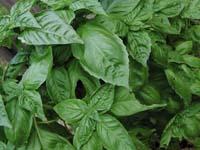Secret of spices smells

Scientists have long wanted to know what is the secret of species, why they have such a special and precious smell. They have long known, for example, that two similar molecules are responsible for the odors of some spices, eugenol and isoeugenol, but they did not know how the plant produces those molecules. Finally, a team of researchers at the University of Michigan has unveiled, at least in part, the secret.
Researchers have worked with two plants that produce these two molecules: basil and petunia. In fact, basil produces a lot of eugenol, while petunia produces isoeugenol and two odorous molecules. The laboratory has studied the DNA sequence of basil leaves and petuny flowers, identifying the genes related to these two molecules.
To confirm that genes are responsible for the production of both molecules, they have been included in the DNA of the bacterium Escherichia coli. The proliferation of a history of Eugenol and isoeugenol in the medium has shown that bacteria produce these odorous molecules.
In nature, eugenol and isoeugenol attract pollinating insects and chase away herbivorous animals and bacteria. Now, knowing how the two odorous molecules form, researchers begin to look for applications to, for example, increase molecular production or obtain more disease-resistant plants.





